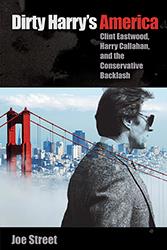While mortuary ruins have long fascinated archaeologists and art historians interested in the cultures of the Near East and eastern Mediterranean, the human skeletal remains contained in the tombs of this region have garnered less attention. In Bioarchaeology and Behavior, Megan Perry presents a collection of essays that aim a spotlight on the investigation of the ancient inhabitants of the circum-Mediterranean area.
Buy Books: Browse by Season: Spring 2018
Fall 2025 - Spring 2025 - Fall 2024 - Spring 2024 - Fall 2023 - Spring 2023Please note that while you may order forthcoming books at any time, they will not be available for shipment until shortly before publication date
From domestic spaces to the public square, Deborah Rotman contextualizes gender and the associated social relationships from the colonial period through the twentieth century.
This innovative volume brings together sociocultural anthropologists, archaeologists, bioarchaeologists, ethnographers, paleopathologists, and others to develop a unifying theory of migration.
In this one-of-a-kind volume, Iraida López explores various narratives of return by those who left Cuba as children or adolescents.
By examining the physical conditions of inmates that might have contributed to their institutionalization, as well as to the resulting health consequences, Geber sheds new and unprecedented light on Ireland’s Great Hunger.
This is the first Finnegans Wake guide to focus exclusively on the multiple meanings and voices in Joyce's notoriously intricate diction.
In Dirty Harry's America, Joe Street argues that the movies shed critical light on the culture and politics of the post-1960s era and locates San Francisco as the symbolic cultural battleground of the time.
In The Ancient Urban Maya, Scott Hutson examines ancient Maya cities and argues that, despite the hazards of urban life, these places continued to lure people for many centuries.
In Known for My Work, Lynda Morgan looks beyond slavery’s legacy of racial and economic inequality and counters the idea that slaves were unprepared for freedom. By examining African American social and intellectual thought, Morgan highlights how slaves built an ethos of "honest labor" and collective humanism. As moral economists, slaves and their descendants insisted that economic motives formed the foundation of their exploitation and made sophisticated arguments about the appropriate role of labor in a just and democratic society.
Driven by facts and hard data, this volume reveals how gender dynamics affect the lives of dancers, choreographers, directors, students, educators, and others who are involved in the world of dance. It unpacks real issues that matter--not just to dance communities but also to broader societal trends in the West.











